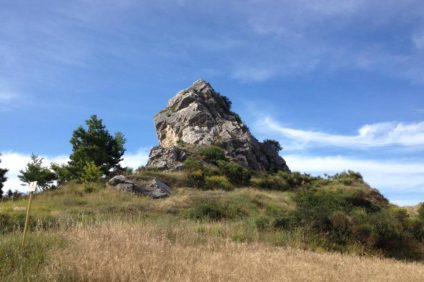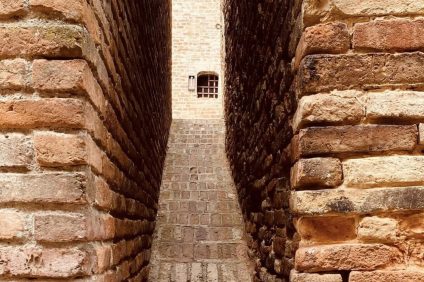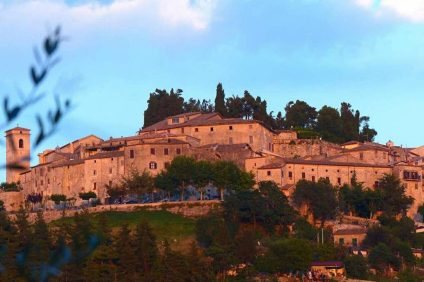Pacentro, in the province of L'Aquila (Abruzzo), is an enchanting medieval village located in the Maiella National Park. Considered one of the most beautiful in Italy, this town, which just over 1.200 inhabitants, is perched at 700 meters above sea level, but the altitude of its territory ranges from 430 to about 2800 meters on Mount Amaro. The mountainous territory allows you to make excursions that lead to spectacular places, such as the Vallone waterfall or San Leonardo Pass. The wood, rich in beeches, oaks, pine forests, is inhabited by foxes, squirrels, wolves and birds of prey. There are several springs that cross it, with their clear waters.
Legend has it
Pacentro, according to an ancient legend, was founded by Pacinus. The Trojan hero, after being left by Aeneas on the banks of the Tiber, would have pushed himself into the Sannio, then, having reached the foot of Mount Morrone, he would have founded the town there. This small village is famous throughout the world, as well as for the naturalistic and architectural beauties that it preserves, also for being the birthplace of the family of the singer Madonna.
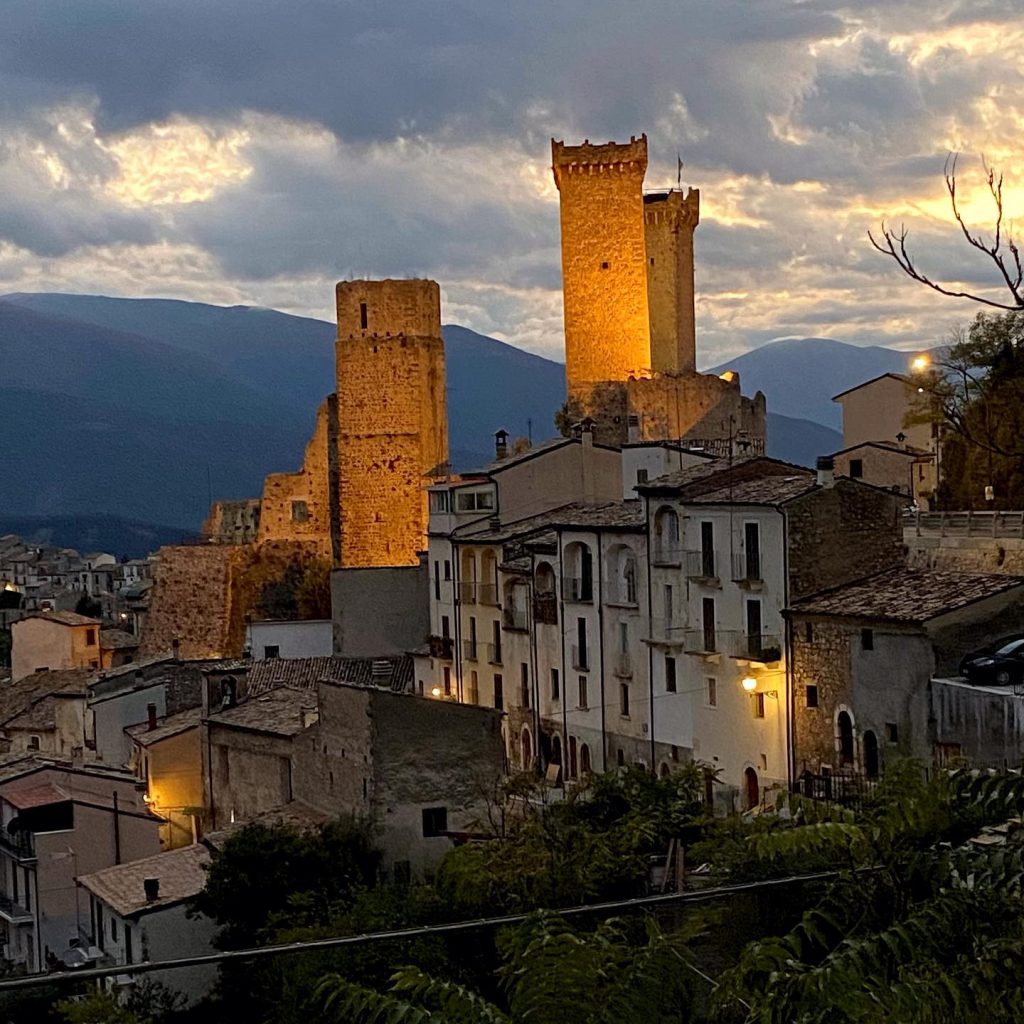
The Cantelmo-Caldora castle
Pacentro is characterized by its medieval castle from whose towers you can enjoy a breathtaking view. Built by the Normans, in the eleventh century, the manor, which dominates the Peligna Valley, has a trapezoidal base surrounded by three square-shaped towers (two of these are crenellated and date back to the fourteenth century) and three cylindrical (fifteenth century). Following the partial destruction by Frederick II of Swabia, the fortress was restored and strengthened by the leader James Caldora.
It then passed into the hands of various lords who lived there (Caldora, Cantelmo, Orsini, Colonna, Maffeo Barberini), until its abandonment and subsequent restoration. The structure has a double wall: the external one, more recent and better preserved, and the internal one, more ancient and ruined. Since 1957 the castle has been owned by the Municipality. Thanks to the numerous restorations and consolidation works carried out from the 60s onwards, a large part of it can be visited by appointment.
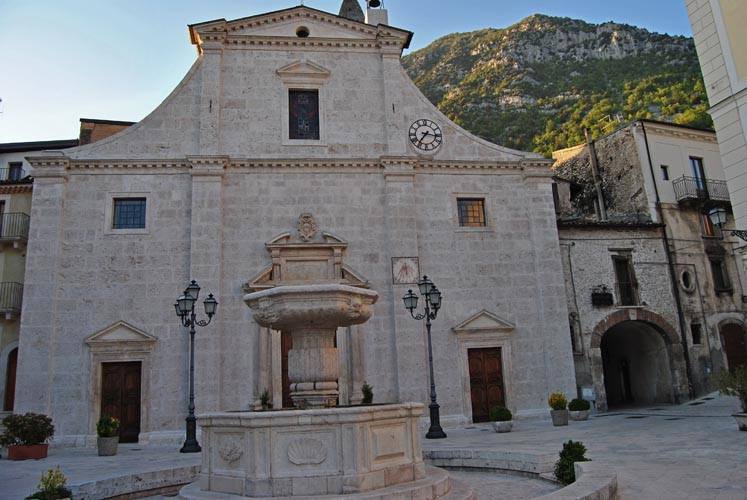
The ancient village
Pacentro is a village of a thousand surprises. A walk along its streets allows you to discover places and things of great artistic, historical and cultural interest. Among these is the so-called "stone tonna"Or" of the scandal ". It is a large hollowed stone, which was once used as a unit of measurement for grain. On it he was forced to sit, completely naked, who did not honor their debts, so that passersby could mock him. Also worth seeing are an ancient basin that served as a public wash house, called "canaje”(Whose shape resembles the hull of a boat), the Marlurita House Museum (an ethno-anthropological site) and the Morrone pasta factory (an industrial archeology site). Very beautiful and ancient are the churches (the church of Santa Maria Maggiore, that of San Marcello, of San Marco, the Franciscan Convent of the Minori Osservanti, the Hermitage of San Germano), which together with the noble palaces with magnificent portals and fountains enrich the village.
Colle Nusca's graffiti
Near Pacentro, there is the Colle Nusca cave, where traces left by primitive men are visible. It is graffiti, made with red ocher. They depict eight men armed with bows and arrows following a priest or tribal chief. There are also animal paintings (a fish and a lizard) and hunting scene. For its high historical value, the site deserves to be visited.
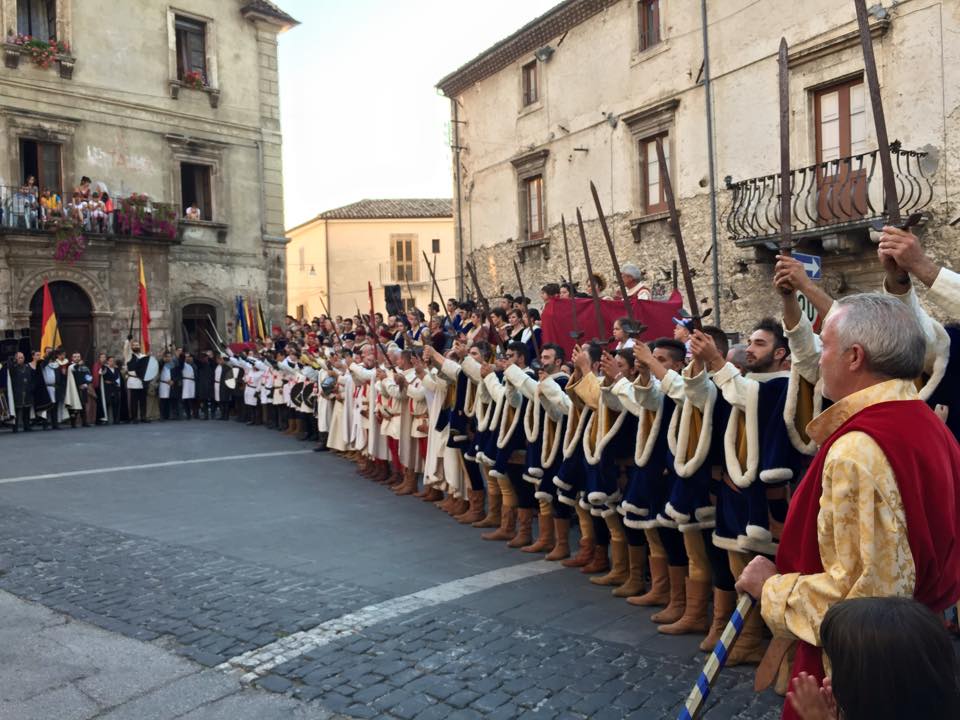
The traditions
Pacentro also boasts some characteristic secular traditions. One of them is the "race of the Gypsies“, Which takes place on the first Sunday of September on the occasion of the feast of Our Lady of Loreto. The young people of the village climb the slopes of Colle Ardinghi, in front of the village, and at the sound of the bell of the church dedicated to the Virgin they throw themselves barefoot along the steep and rugged path that leads to the church, sustaining many injuries. The winner receives a cash prize and a piece of cloth, usually used to make a new dress. Another important tradition is a medieval re-enactment: the "Marriage of the Caldoreschi".
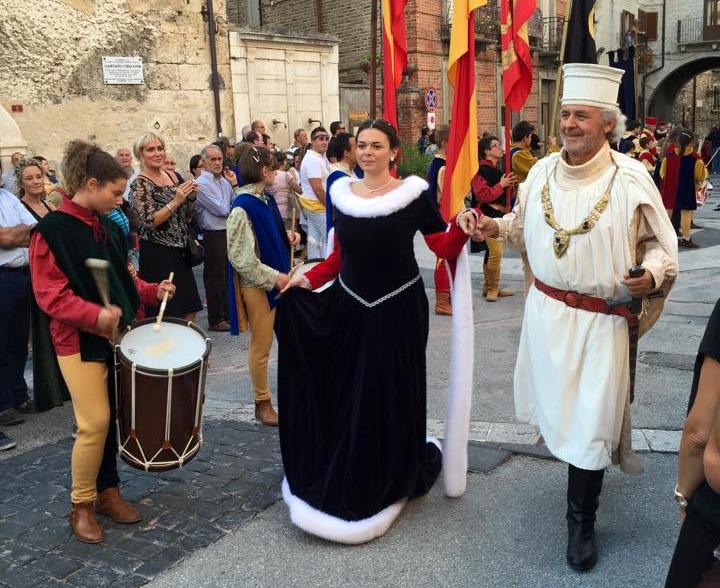
It takes place in the third week of August and includes cultural and folkloristic itineraries, ending with the marriage of Count Jacopo Caldora with the Countess of Popoli, at the castle. In mid-August, however, theEnlistment of the People at Arms, a historical re-enactment in costume that reconstructs the enlistment and investiture of the knights by the lord of Pacentro, in 1450. The procession starts from the castle and winds through the suggestive alleys of the ancient village. Furthermore, one of the most anticipated gastronomic traditions takes place at the beginning of August: the Polta festival. Polta is a tasty peasant dish based on beans, potatoes and boiled cabbage and then fried with garlic, oil and chilli. In short, Pacentro is a multi-faceted country, which intrigues and captures visitors.
(Photo: Municipality of Pacentro website; Pacentro Facebook page)


